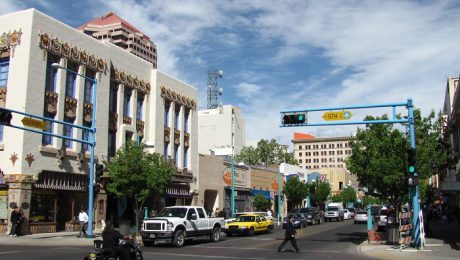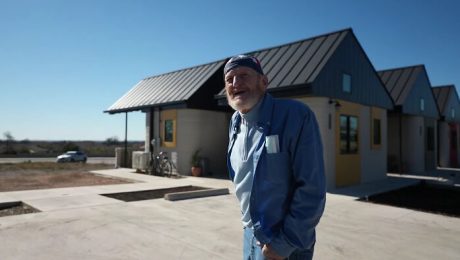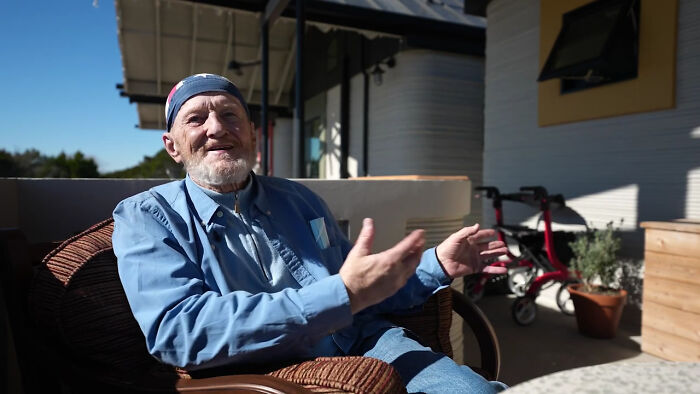People In This Online Group Share The 30 Most Unpleasant-Looking Cities In America They’ve Ever Visited
From state armholes to middle fingers of the country – some cities in the United States are known for being the least attractive urban settlements. Of course, beauty is in the eye of the beholder, so not everyone finds NYC or New Orleans pleasurable, and perhaps some negative experiences would influence one’s preferences. But there are certainly a few cities that have no chance of not being called ugly and we hope you don’t live there.
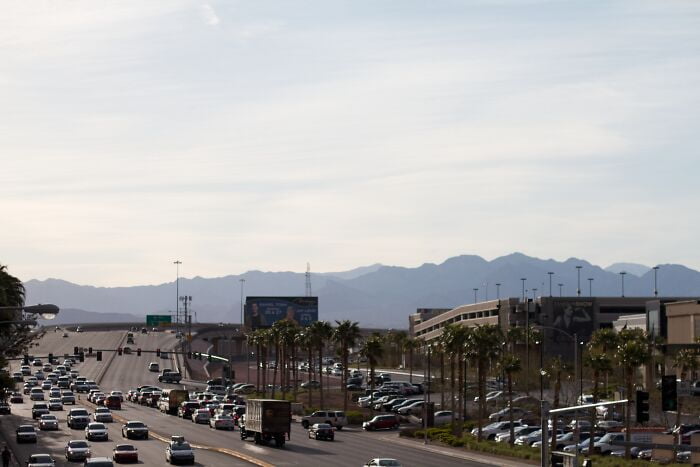
Vega. Although I wouldn’t call it much of a city; it looked more like a set of buildings, neon, and wasted lives all sewn together in the middle of a bumf *** nowhere.
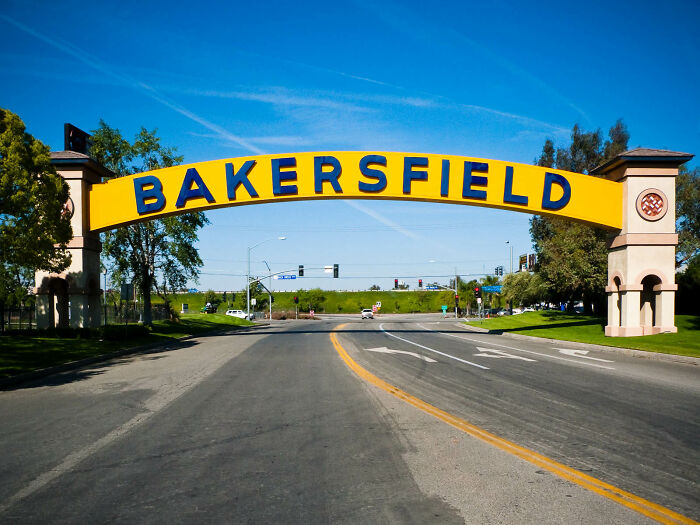
Bakersfield, California – Never in my life have I seen such an acid sight. Oil wells along the eye see that it almost looks heard of motionless ants hunching over the ground.
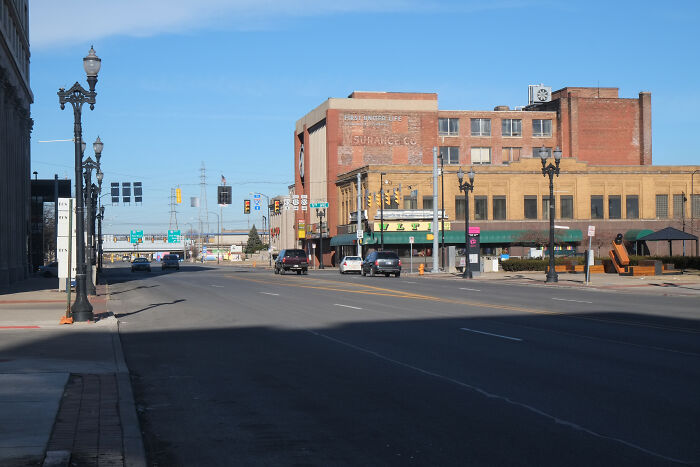
Gary, Indiana. The whole town was gray. No color. I thought I turned color blind until I got to Chicago.
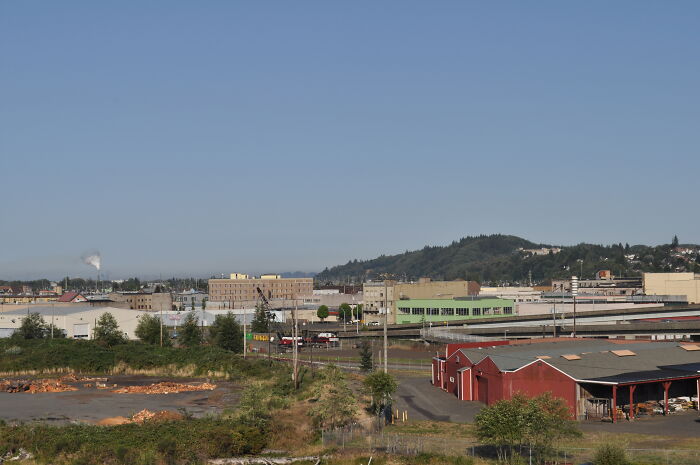
After visiting Aberdeen, Washington, I felt I understood Kurt Cobain better. The natural surroundings are amazingly beautiful, but in the middle of it is this gray, dark, depressing city built on a swamp that feels like it’s sucking the life out of you. If a city could have feelings, this one would be completely hopelessly depressed.
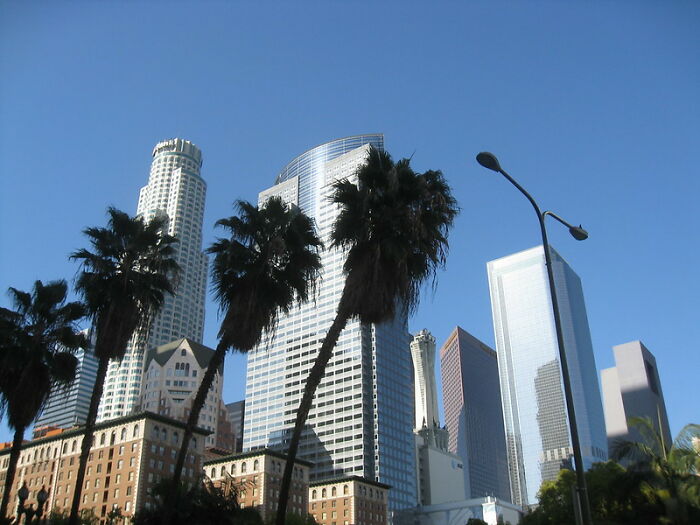
LA. a depressing concrete hole and I’m glad I visited more beautiful cities in the United States. everyone was so angry/sad there.
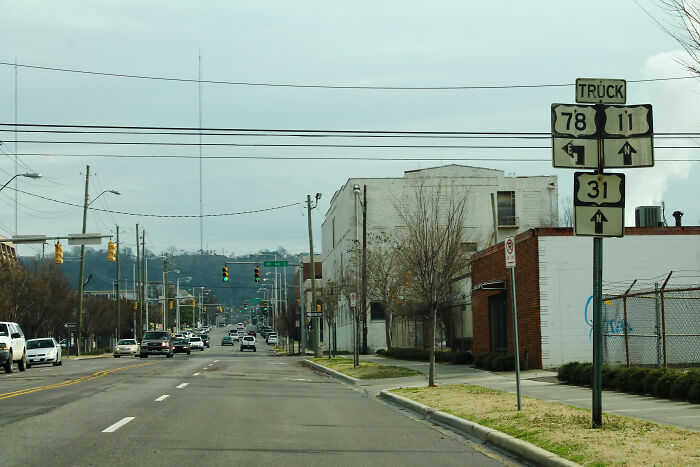
Birmingham, Alabama. Half of the city is just banal brown brick buildings from the 80s, and the other half is basically abandoned ruins of banal brown brick buildings from the 80s.
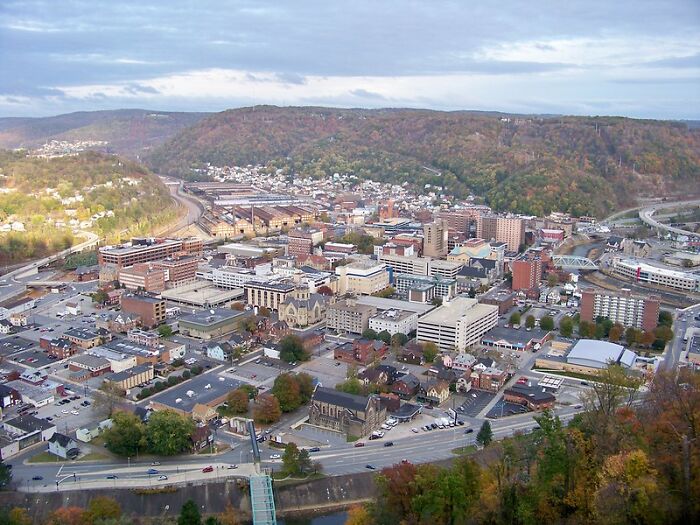
Johnstown, Pennsylvania … You can almost feel the city dying slowly, worryingly dying …
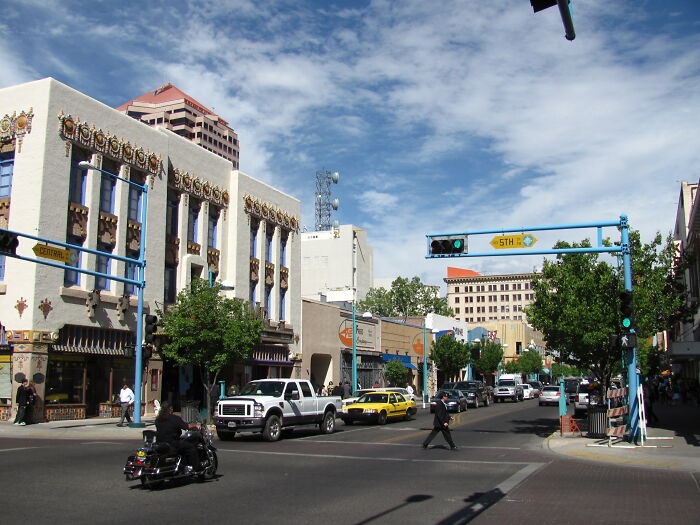
Albuquerque, NM. Let me paint a picture. In a rental car after 14 hours of driving I drive about halfway into the city. And badly need gasoline. I drive to a pretty empty gas station. Only Some oily cardboard sheets are spread out here and there. Trees almost cover 3 / 4s of the sides of the building itself. I am ready to insert my card into the reader when 6 people start to come out of the cover of the trees. Three guys are sitting or lying on the scattered cardboard and three women/girls are in questionable age somewhere between 16 and 40 years old. My stadium approaches my car and tries to mow and chop and cough to get my attention. I withdraw my card, say “aww s ***, reject. F ***.” Get back in my car and hurry away. In my retrospect I see more people coming out of the trees. They did not look satisfied.
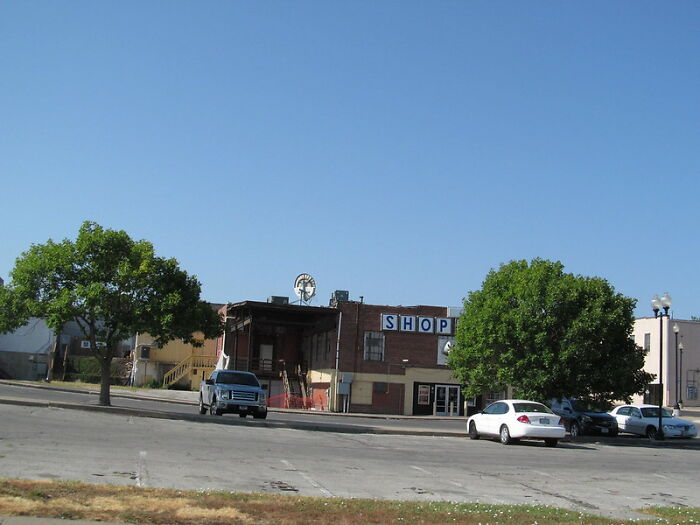
Independence, MO. – methamphetamine capital of the United States. Even the buildings look like they smoke stones.
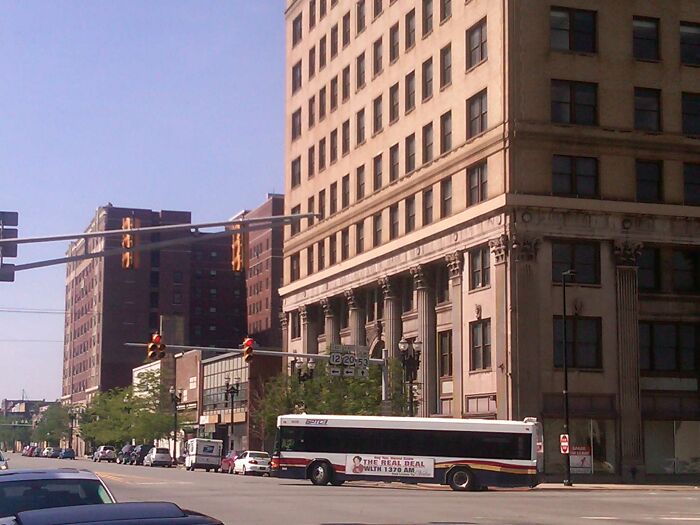
Gary Indiana is the best reason to ever remove fast limits from highways. So you can get in and out of Gary in the shortest amount of time.
You know a city is bad when the local government brags that there have been less than a dozen murders and less than 20 dead babies this month!
Things are looking for Gary, Indiana!
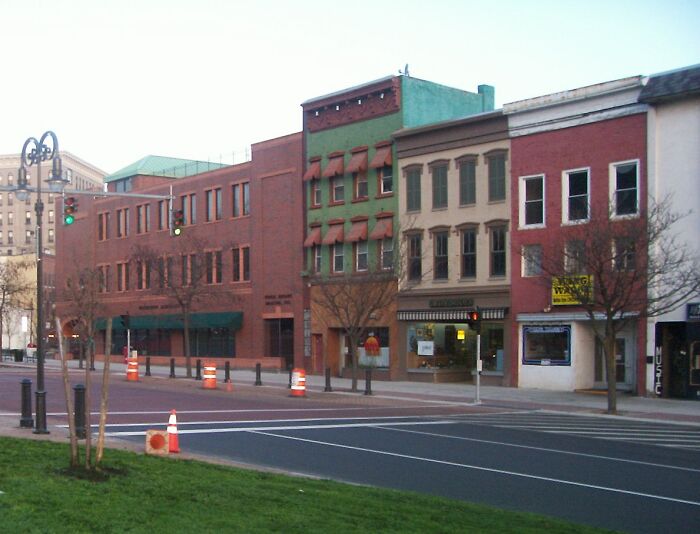
No one mentioned Watertown NY, so I guess I’ll defend it. I grew up in the Watertown area. Since then he has traveled extensively throughout the United States. I’ve seen some really awesome places, but I’ve still seen a place that captures the same kind of energy that Watertown does.
Watertown is unique in that it has the perfect combination of a depressed economy, dilapidated infrastructure and bad weather. It is positively hammered with snow in winter due to its proximity to Lake Ontario and often sets records for snowfall and low temperatures. The winters are brutal and sometimes start as early as October and can last until May. It exists in what was once the bottom of an ancient glacial lake so the low altitude means a constant cloud cover that makes it gray and gloomy during the summer time.
On top of that, almost any art or music is written about the place is about how bad it is. Frank Sinatra’s Watertown album is depressing. Harry Chapin wrote the song “A Better Place To Be” while he was in Watertown. There are also more examples. It’s so depressing that it inspires people to write about how depressed it is.
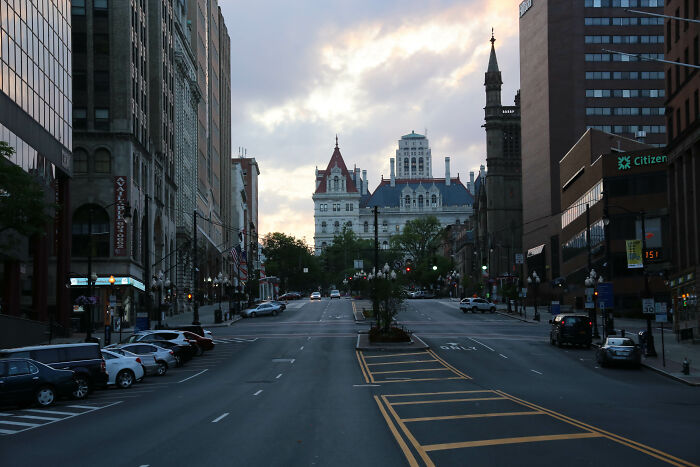
Albany, NY just feels like a really big Greyhound bus station. In summer it gets a little dirty, but in winter it is a muddy gray spike. Whenever I was there, I felt like I needed to escape from it – probably in an old school bus with a razor wire laced around it with sharp broomsticks sticking out of the windows.
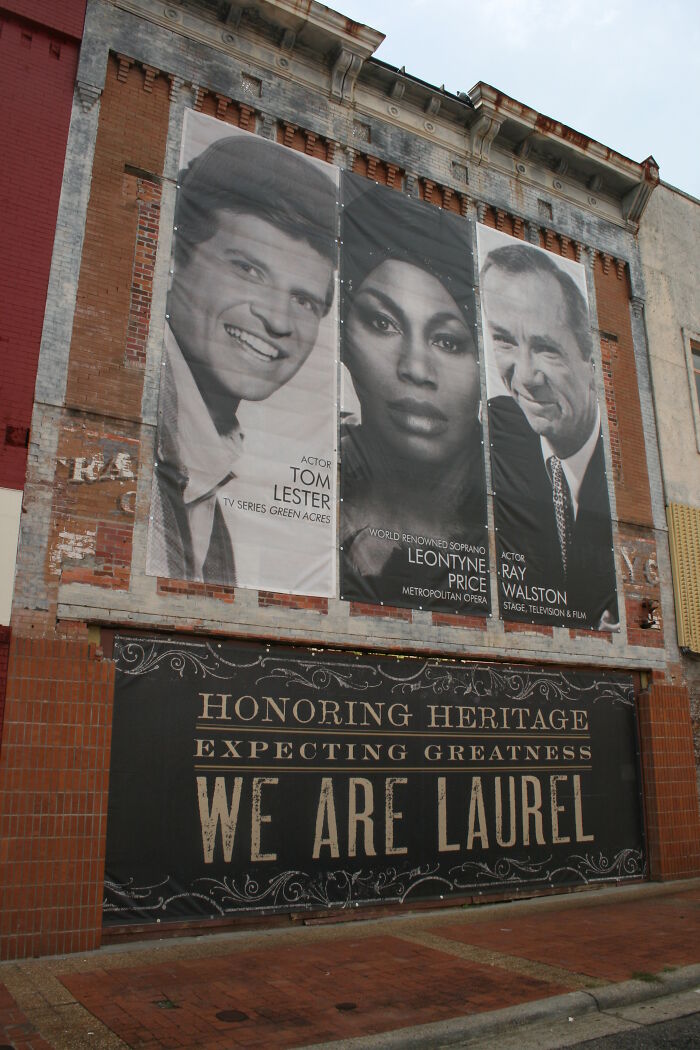
Laurel, MS. The attempt to accomplish it on the HGTV show, but it’s shit. Upgraded to the most violent city in Mississippi last year, if I’m not mistaken.
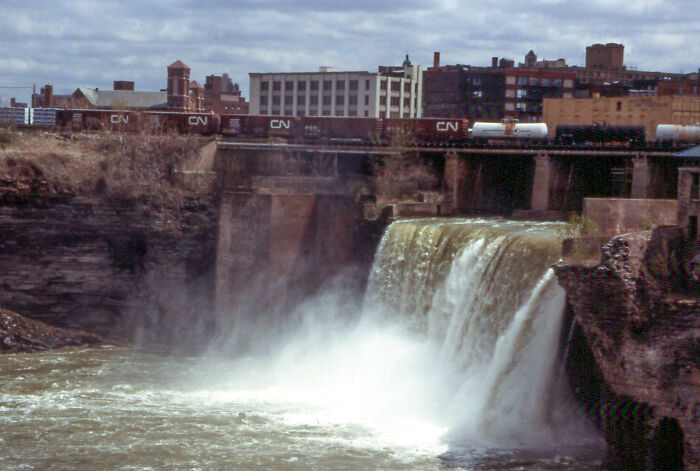
I can’t believe no one mentioned Rochester NY, Anything Beyond Culver Road. The worst parts are near Lyell and Monroe Ave. Place is sh * t hole.

Spokane, WA. It seems to have been in the late ’80s, when Seattle became a major destination with no vigor or anything appealing about the city in general. Just sets of residential areas with a few luxury eateries to keep it just outside the last place.
Watch this space for more information on that. Stay tuned to Feeta Blog for the latest updates about Architrcture, Lifestyle and Interior Design.
People In This Online Group Share The 30 Most Unpleasant-Looking Cities In America They’ve Ever Visited
- Published in 700-page, albuquerque, Architecture, Bakersfield, CA, california, El Paso, Homepage featured, Indiana, Johnstown, NM, Ohio, pennsylvania, reddit, Social Issues, Texas, travel, ugly city, USA
Homeless Man Gets To Live In A 3D-Printed Tiny Home
70-year-old Tim Shea has progressed a lot since his time as a homeless heroin addict. In what looks like a 180-life transformation, in September, he moved to the outskirts of Austin to live in a 400-square-foot home built by a 3D printer from the company’s Icon.
“I could never have imagined where I came from that I would ever have this beautiful apartment,” Tim told the press recently and called his new home a “miracle”. Before living to live in the Community First! A village, a 51-acre site that houses 500 homes for the chronically homeless, Tim lived in a camper van.
Icon 3D homes printed with a Vulcan II printer have one bedroom, one bathroom, a full kitchen, a living room and a large porch, and give hope to many people with no place to call home. The company’s CEO Jason Ballard said their mission was to “make decent housing accessible to everyone, everywhere” and with Tim being the first proud resident of the 3D house, the future looks brighter than ever.
Formerly homeless man 70-year-old Tim Shea transformed his life when he became the first resident of a 3D printed house in a community in Austin, Texas, in September
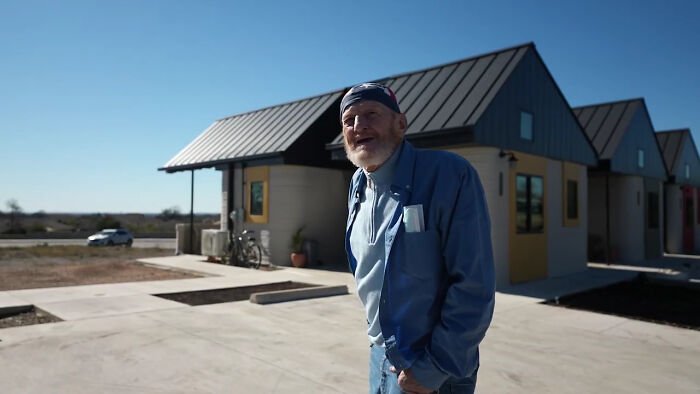
Prior to this new permanent 3D home, Tim lived in the community in an RV. Previously, he struggled with drug addiction and like many seniors in the United States, was unable to maintain affordable housing.
Tim’s 400-square-foot 3D house was built with a Vulcan II 3D printer by the company ICON, which specializes in advanced construction technologies.
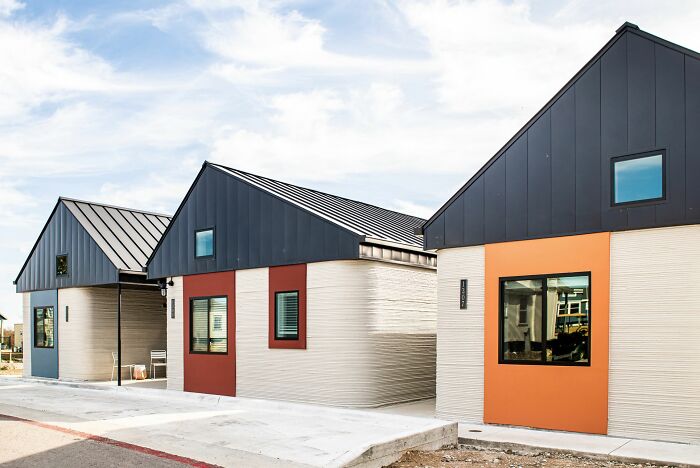
In an interview with NY Poster, Tim said his previous lifestyle made him hide from the world. “I think from my personal experience of my previous way of life that I developed a shell. I didn’t feel safe, and whenever I had the chance, I would hide or isolate myself. I never really wanted to interact with people. “
Tim is said to be the first occupant of one of the 3D printed house
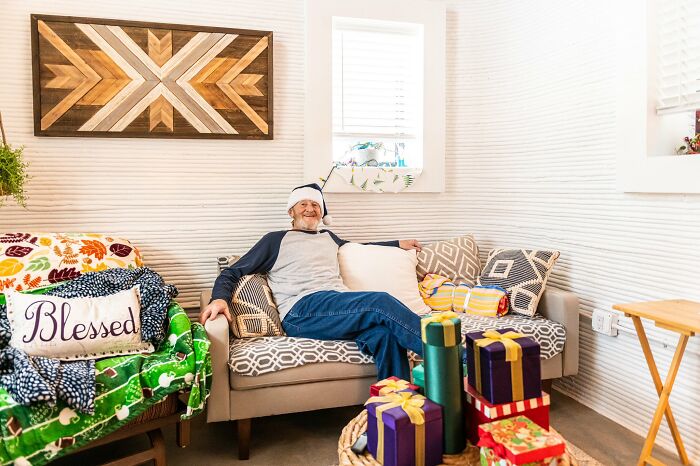
But after moving into her new home in September, at the Community First! In the village, he had his life completely changed. “Everything I do is quite the opposite, and I have a lot of activities every day with others,” he said.
The house is located at Community First! A village is known for its high-level vision of homeless housing
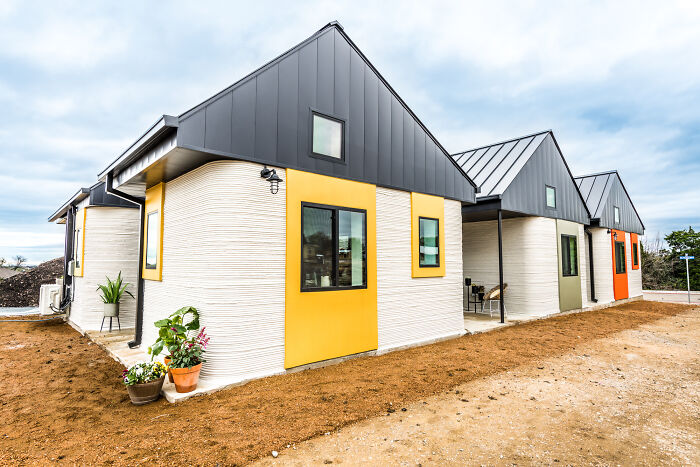
At first, Tim couldn’t believe he would be the first person living in a 3D printed house like this. “When I found out I was going to be the first person in the United States to move to a 3D-printed home, I thought it was pretty awesome. The people I used to run away from, I run. If you’ve been on both sides of the fence, you know some people just need a little bit of encouragement and support, ”he said. NY Poster.
After moving to a beautiful 3D house, Tim’s life changed drastically
Tim’s 3D house is located in the Community First! A village that helped homeless people with shelter, community and support. Alan Graham, a real estate developer and founder of the village as well as the project called Mobile Phones & Fish, is helping others find a place to call home over the past two decades.
ICON has so far developed six different 3D homes, all with different layouts
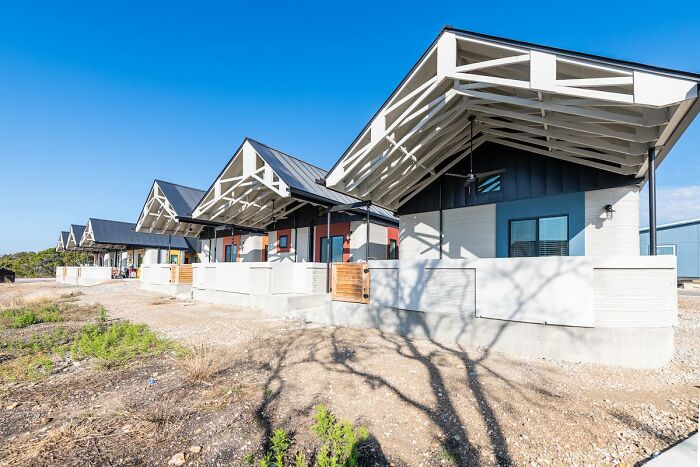
According to Graham, “Home is essentially a place of connection and of life-giving and basic relationships.” His goal is to “make everyone feel at home, ultimately inviting those who live along the edge of society, into your heart.”
Tim says “it’s just a miracle to me that I live there in such a beautiful house”
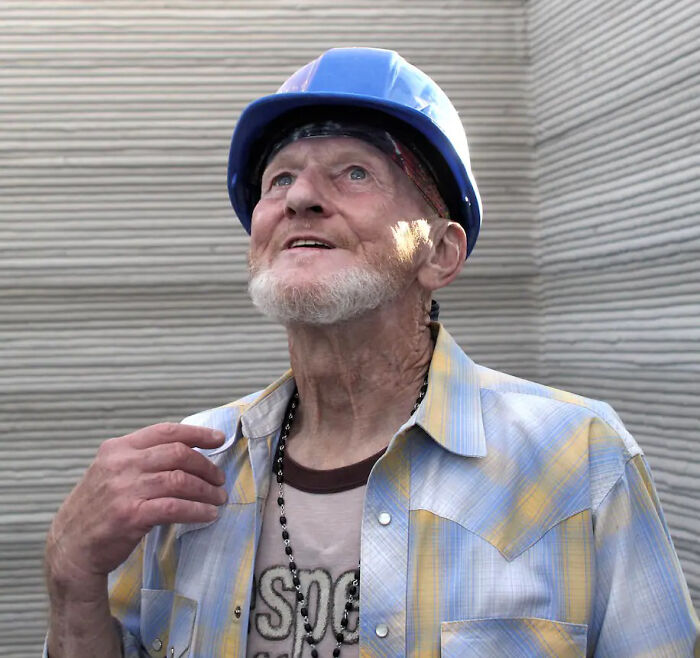
Tim’s 3D printed home isn’t the only one in town. ICON has built 6 3D homes, all with different layouts for different needs to shelter the homeless on the site. Tim chose an open floor layout because he has arthritis.
His 3D house has one bedroom, one bathroom, full kitchen, living room and porch
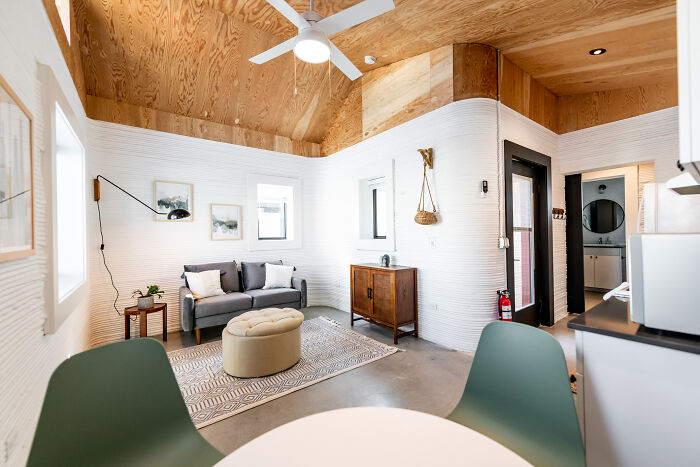
The project was made possible by an ongoing partnership between ICON, the construction technology company, and Austin’s nonprofit Mobile Loaves & Fishes.
Alan Graham, the founder and CEO of Mobile Loaves & Fishes, commented on the project: “Vulnerable populations like the homeless are never among the first to access new things, but now here in Austin, Texas, they are among the first in line, who will live in some of the most unique homes ever built – and we think that’s a beautiful thing. “
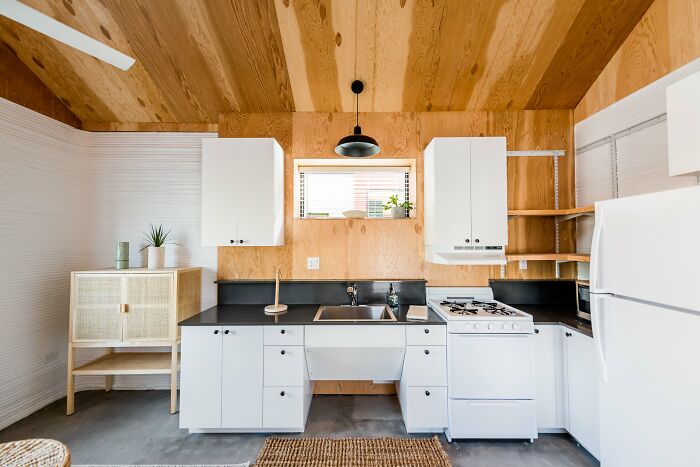
To find out more about this amazing project, Bored Panda contacted Brooke Bauguess, vice president of Communications and Public Affairs at ICON. ICON is an Austin-based construction technology company using 3D robotics, programs and advanced materials to change the paradigm of home building.
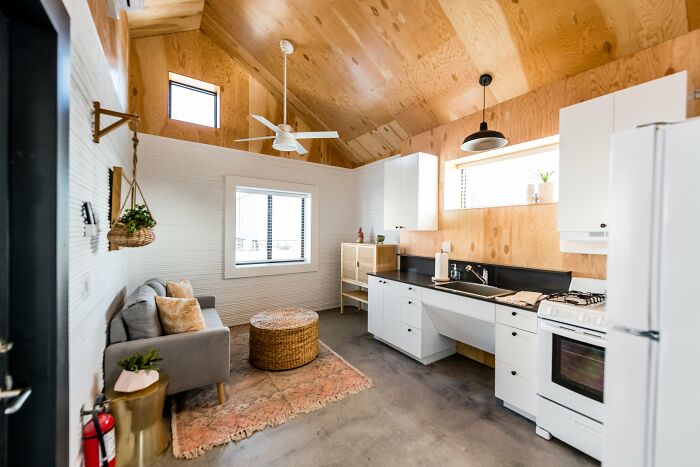
ICON believes that “3D printing will be the preferred method of homebuilding in the future and tends to be a pioneer of the technology that has the potential to end homelessness,” Brooke told us.
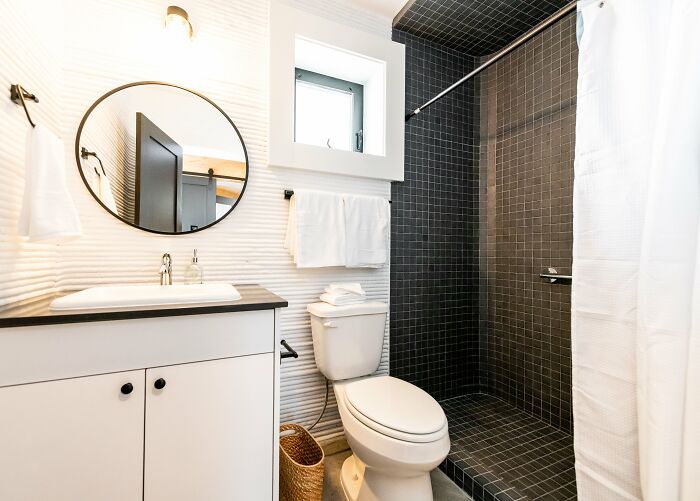
“The United States needs 3.3 million homes a year and is currently building 1.3 million. 3D printing construction can help deliver robust, sustainable, decent housing across the United States and the world. “
Tim, who overcame drug addiction, chose an open floor plan because of arthritis
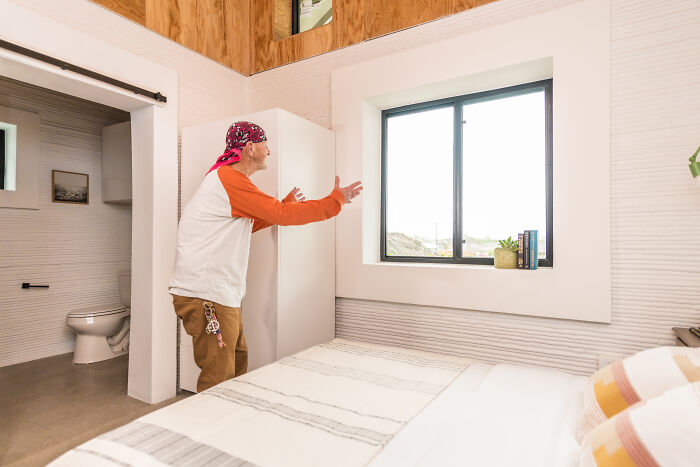
ICON has delivered two dozen 3D-printed homes across Mexico and the United States, including social housing projects with nonprofit organizations, major housing developments with developers and more.
The ICON printer is controlled by a tablet remotely and takes a crew of four to six people to build a house
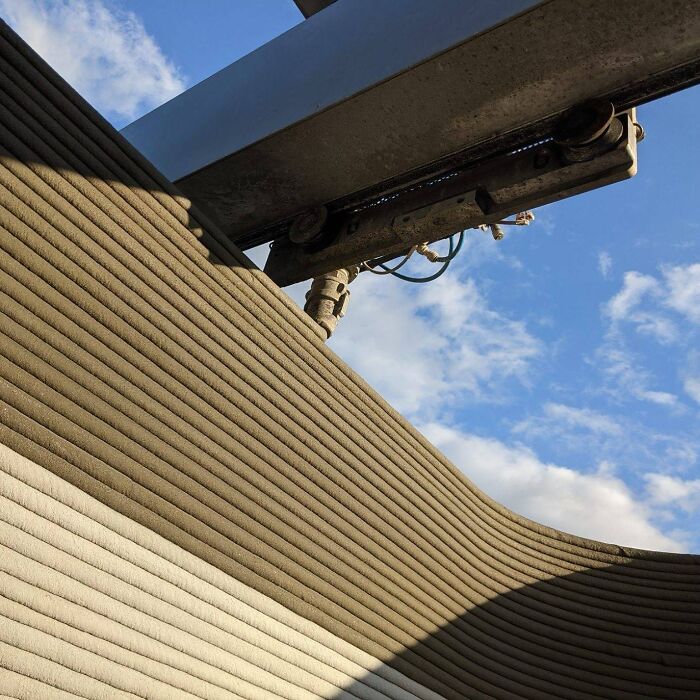
“We appreciate the opportunity to see our technology deliver homes for those in need in Mexico and serve those who have experienced homelessness in central Texas,” Brooke said and continued, “Tim Shea in particular is the first person to ever live in an ICON 3D printed home. We worked closely to design and select furniture in this project in particular and are thrilled to see him thrive in his new home. “
A special concrete formula was used for the project and applied by a 3D printer, which is basically just a concrete nozzle at the end of a giant robot arm.
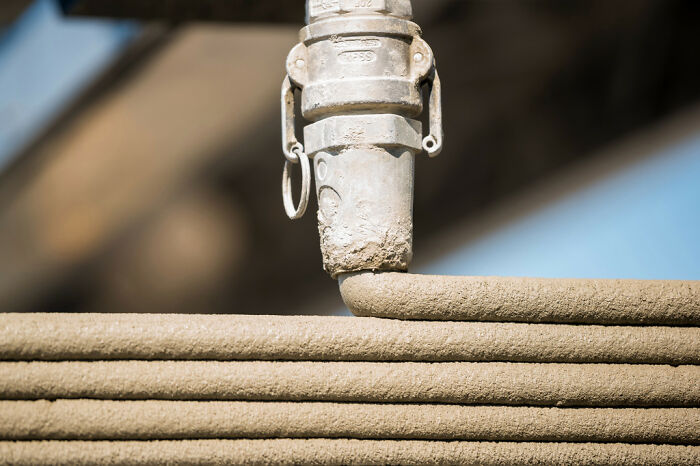
“ICON at its heart is an innovation for a better future,” said Jason Ballard, co-founder and CEO of ICON. We will have to risk some if we want a better world for ourselves, and the team at Mobile Loaves & Fishes shares a similar vision in their efforts to empower the community around them in a lifestyle of service to the homeless. We need a radical rethinking of the way we approach solving troubling problems in our society such as homelessness. Ultimately, this is about people and about human dignity. “
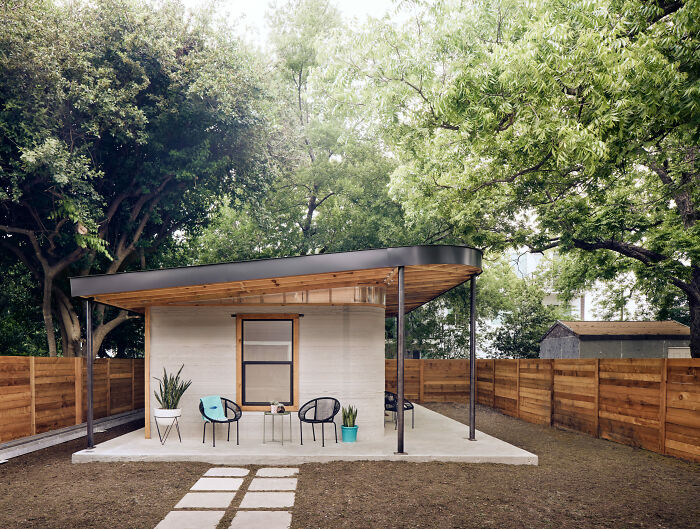
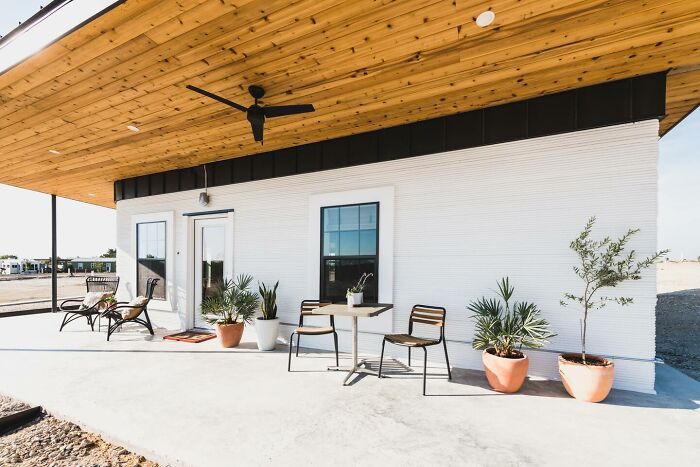
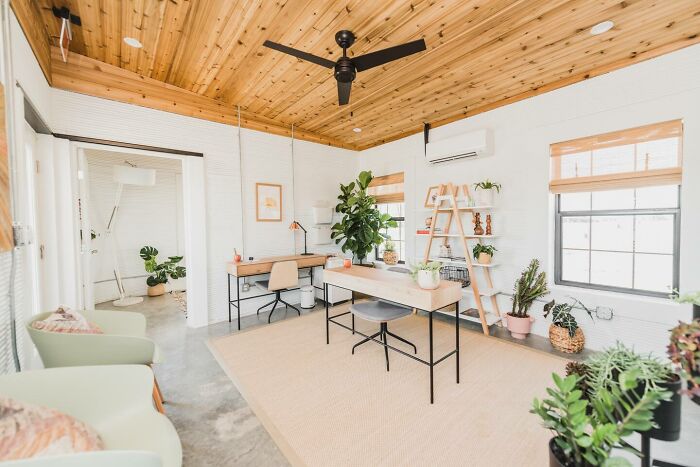
Many people praised the project and its ability to help those in need.
Watch this space for more information on that. Stay tuned to Feeta Blog for the latest updates about Architrcture, Lifestyle and Interior Design.
Homeless Man Gets To Live In A 3D-Printed Tiny Home
- Published in 3d printed houses, 3d printers, 700-page, Architecture, Austin, Community First Village for the homeless, Homepage featured, homes constructed with 3D printer, icon, Icon's 3D Printer, People, Technology, Texas, the first homeless man to live in a 3D printed house, the future of housing, Tim Shea

